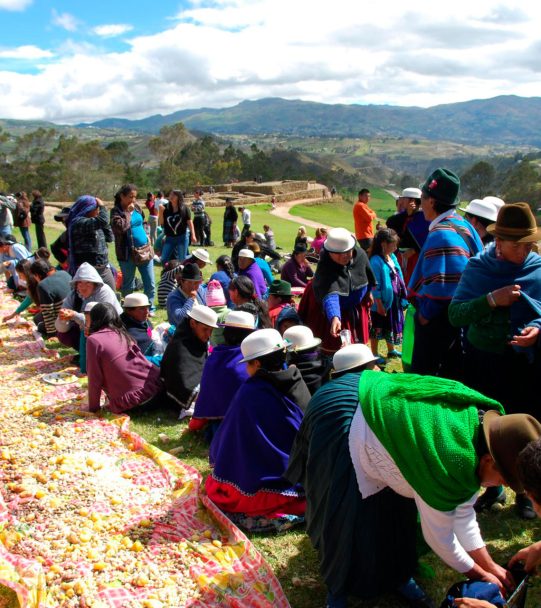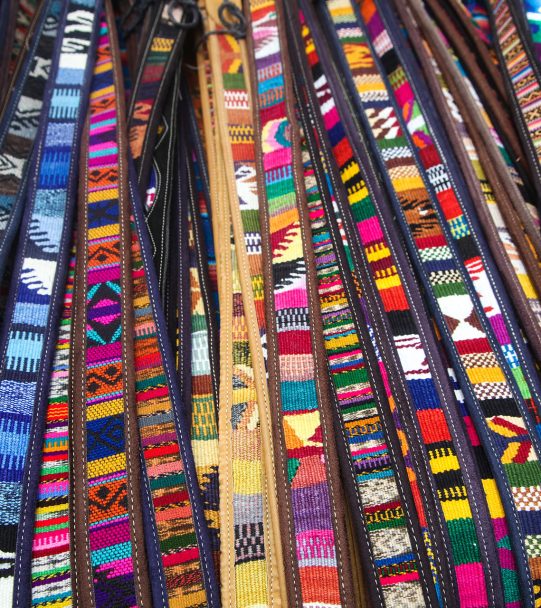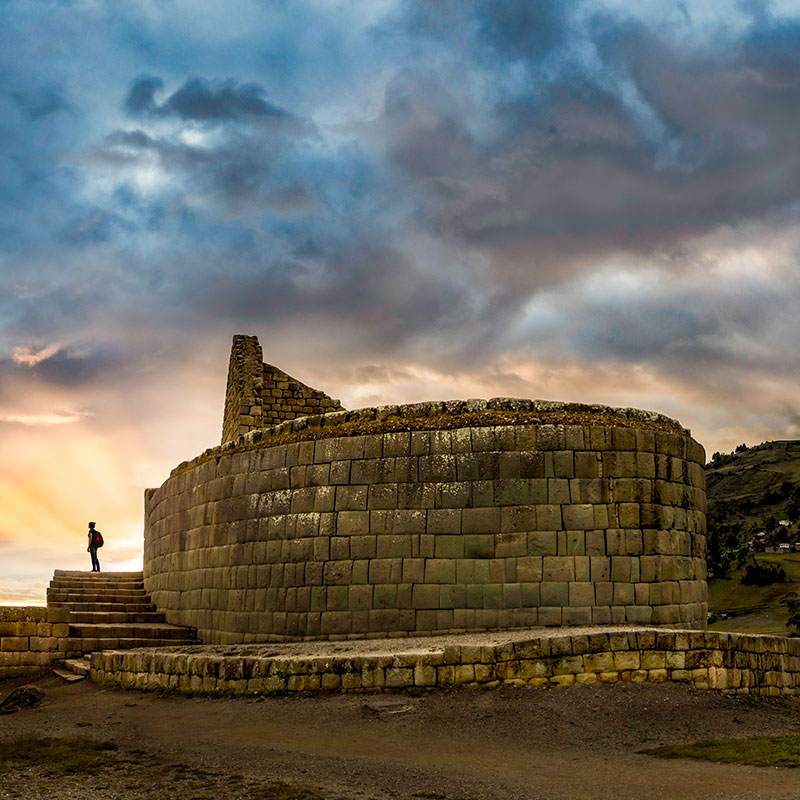Cañar
The province of Cañar, located in the southern part of the Ecuador, is a province that combines history, nature and ancestral traditions. Its capital, Azogues, stands out for its historic center of traditional architecture and its renowned handicraft production of straw weaving, ceramics and stone carvings. This province has one of the most important Inca complexes in the country, the Ingapirca Archaeological Complex, in the canton of Cañar, demonstrating its rich heritage and its value as a living testimony of cultural heritage. The province of Cañar is recognized for its cultural manifestations, agricultural production in its valleys and craftsmanship. The presence of communities with indigenous roots has marked its identity, making Cañar a meeting point of living history.
Connectivity
You can reach the province of Cañar by road by private car or bus through routes that connect Azogues, its capital, with major cities such as Guayaquil y Quito, The trip takes between 4 and 8 hours respectively. For those who prefer to fly, the Mariscal La Mar International Airport in the city of Cuenca is the closest, and from there your trip continues by land for 35 minutes to Azogues.
Cañar
Subscribe to receive news about Caminos Andinos
Temperature
Ranges from 10°C to 22°C
Weather
Cold temperate
More destinations
Activities and attractions
The province of Cañar awaits you with a journey that unites history, nature and living traditions. In Azogues, ascend to the Sanctuary of the Virgin of the Cloud and discover the Edgar Palomeque Vivar Ethnographic Museum, Museum of the House of Ecuadorian Culture Benjamin Carrion and the church of Sisid Anejo. Delve into the past in the Ingapirca and Cojitambo complexes, where Cañari and Inca vestiges merge with imposing viewpoints. Explore the Culebrillas Lagoon in Sangay National Park, connect with the best preserved stretch of the Qhapaq Ñan in Ecuador and delight your palate with pork rinds in the Biblián canton. Cañar connects you with the Andean essence.
Sisid Annex
PHOTO: Ministry of Tourism of Ecuador
Inti Raymi
PHOTO: Ministry of Tourism of Ecuador
Pig shells
PHOTO: Ministry of Tourism of Ecuador
Discover what we do
-
-
CULTURE
Cañar: Museums and culture
Discover the spiritual legacy and cultural of Cañar visiting its historical jewels. In Azogues, at the top of El Calvario hill is the imposing Sanctuary of the Virgen de la Nube, also known as the Franciscan Sanctuary, a center of devotion and monumental architecture. Complement your tour of the city with a visit to the Edgar Palomeque Vivar Ethnographic and Archaeological Museum, which preserves valuable Cañari and Inca pieces, and the Museum of the Benjamín Carrión Ecuadorian House of Culture. And in the parish of Ingapirca, be amazed by the church of the Sisid Anejo community, the second oldest in Ecuador, founded in the seventeenth century and part of the religious legacy of the Ecuadorian Austro.
Ingapirca Archaeological Complex and Cojitambo Archaeological Complex: Great Pre-Hispanic Civilizations
Visit the Ingapirca Archaeological Complex, the most important Inca site in Ecuador and a must for history lovers. Located in the Ingapirca parish, Canton Cañar, this architectural complex combines Cañari and Inca structures, highlighting the imposing Temple of the Sun, built with precision and astronomical alignment. It runs along trails that cross terraces, ceremonial plazas and ancient canals. The site has a site museum, local guides and natural viewpoints. Ingapirca connects you with the Andean past in an environment full of culture and high altitude landscapes.
Explore the Cojitambo Archaeological Complex, located in the Cajitambo parish, Canton Azogues. Here you can walk among Cañari and Inca vestiges, such as walls, terraces and roads that were part of the ancient Qhapaq Ñan. The hill where it sits offers a natural viewpoint of 360 degrees, which allows you to see the geography of the canton Azogues, Déleg, Biblián and part of Cuenca of the Province of Azuay. It is also ideal for those who enjoy adventure tourism, with climbing and hiking trails. Cojitambo unites archeology, nature and emotion in one place.
-
-
NATURE
Explore two must-see destinations in Cañar. In Cerro Cojitambo, located in the Azogues canton, enjoy hiking through trails natural The famous rock wall, when you get to the top you will visit a Cañari and Inca archaeological complex with terraces and ancestral walls. The Culebrillas Lagoon, located in the Cañar canton within the Sangay National Park south zone, is surrounded by Andean moors, in this area there is the best preserved stretch of Qhapaq Ñan of Ecuador, in its 18km from Culebrillas to Ingapirca. The area is ideal for medium-demanding hikes, observation of high Andean fauna and cultural tours that follow the traces of the ancient Inca road network.
-
-
ANCESTRAL COMMUNITIES AND RURALITY
Discover in Cañar the cultural richness of the Cañari people, a pre-Inca nation that today has about 22,000 members in the province and keeps alive the Kichwa language, the minka or community work and ceremonies. The Cañari people are part of the Kichwa nationality in Ecuador and they maintain their own systems of organization and ancestral culture.
Sisid Annex: Experiential tourism
Discover experiential tourism with the indigenous community of Sisid Anejo, which opens its doors to share its culture and traditions. Visit family orchards, visit what is considered the second oldest church in Ecuador, learn about handicraft enterprises, learn words in Kichwa and participate in daily chores with local families. An authentic experience that connects the visitor with the history, the people and the living spirit of the Andean region.
Fairs and ancestral festivals:
In Cañar four Raymis Cañaris are celebrated. The Killa Raymi or Coya Raymi, in the province of Cañar, is celebrated in September in the archaeological complex of Coyoctor in the canton of El Tambo, is a celebration in honor of the moon, femininity and Pachamama. The Capac Raymi is celebrated by the Cañari people in Culebrillas in December. The Lalay Raymi is the celebration between February and March, coincides with the carnival, and is celebrated strongly in the cantons of Cañar, El Tambo and Suscal. The Inti Raymi is celebrated in the canton of Cañar in Ingapirca and the city of Cañar in the foothills of the Narrío hill. In Azogues in June of each year, the Sara Raymi or corn festival is celebrated in the archaeological complex of Cojitambo.
Holidays:
Experience unique celebrations in Cañar. In January, the Fiesta de la Virgen de la Nube gathers thousands of pilgrims who climb the stairs of El Calvario hill to participate in masses, processions and admire spectacular views. In January, May and September, the Virgen del Rocío comes alive in Biblián with colorful processions, castle burnings, balloon releases and family activities. Between February and March, during Carnival, immerse yourself in parades of traditional costumes, ritual painting and ancestral dances that evoke Cañari legends.
-
-
GASTRONOMY
In the province of Cañar, delight yourself with "cascaritas de chancho", crispy pork skins seasoned with salt and chili. Taste the potatoes with guinea pig, Andean potatoes bathed in pumpkin seed sauce or zambos pepa, accompanied by golden guinea pig. Enjoy the chiviles, traditional from the Suscal canton, snacks made of corn flour and cheese wrapped in huicundo leaves. Come and discover these ancestral flavors of Cañar.
-
-
CRAFTS
Discover the rich craftsmanship of the Cañar canton, where masters weave ponchos, sashes and chumbis in sheep's wool with symbolic designs, embroidery and unique dyes. In Azogues, the blacksmithing, pottery and weaving of toquilla straw, mostly in high quality hats, stand out. Take with you a souvenir that is a piece of history.
CULTURE
Cañar: Museums and culture
Discover the spiritual legacy and cultural of Cañar visiting its historical jewels. In Azogues, at the top of El Calvario hill is the imposing Sanctuary of the Virgen de la Nube, also known as the Franciscan Sanctuary, a center of devotion and monumental architecture. Complement your tour of the city with a visit to the Edgar Palomeque Vivar Ethnographic and Archaeological Museum, which preserves valuable Cañari and Inca pieces, and the Museum of the Benjamín Carrión Ecuadorian House of Culture. And in the parish of Ingapirca, be amazed by the church of the Sisid Anejo community, the second oldest in Ecuador, founded in the seventeenth century and part of the religious legacy of the Ecuadorian Austro.
Ingapirca Archaeological Complex and Cojitambo Archaeological Complex: Great Pre-Hispanic Civilizations
Visit the Ingapirca Archaeological Complex, the most important Inca site in Ecuador and a must for history lovers. Located in the Ingapirca parish, Canton Cañar, this architectural complex combines Cañari and Inca structures, highlighting the imposing Temple of the Sun, built with precision and astronomical alignment. It runs along trails that cross terraces, ceremonial plazas and ancient canals. The site has a site museum, local guides and natural viewpoints. Ingapirca connects you with the Andean past in an environment full of culture and high altitude landscapes.
Explore the Cojitambo Archaeological Complex, located in the Cajitambo parish, Canton Azogues. Here you can walk among Cañari and Inca vestiges, such as walls, terraces and roads that were part of the ancient Qhapaq Ñan. The hill where it sits offers a natural viewpoint of 360 degrees, which allows you to see the geography of the canton Azogues, Déleg, Biblián and part of Cuenca of the Province of Azuay. It is also ideal for those who enjoy adventure tourism, with climbing and hiking trails. Cojitambo unites archeology, nature and emotion in one place.
NATURE
Explore two must-see destinations in Cañar. In Cerro Cojitambo, located in the Azogues canton, enjoy hiking through trails natural The famous rock wall, when you get to the top you will visit a Cañari and Inca archaeological complex with terraces and ancestral walls. The Culebrillas Lagoon, located in the Cañar canton within the Sangay National Park south zone, is surrounded by Andean moors, in this area there is the best preserved stretch of Qhapaq Ñan of Ecuador, in its 18km from Culebrillas to Ingapirca. The area is ideal for medium-demanding hikes, observation of high Andean fauna and cultural tours that follow the traces of the ancient Inca road network.
ANCESTRAL COMMUNITIES AND RURALITY
Discover in Cañar the cultural richness of the Cañari people, a pre-Inca nation that today has about 22,000 members in the province and keeps alive the Kichwa language, the minka or community work and ceremonies. The Cañari people are part of the Kichwa nationality in Ecuador and they maintain their own systems of organization and ancestral culture.
Sisid Annex: Experiential tourism
Discover experiential tourism with the indigenous community of Sisid Anejo, which opens its doors to share its culture and traditions. Visit family orchards, visit what is considered the second oldest church in Ecuador, learn about handicraft enterprises, learn words in Kichwa and participate in daily chores with local families. An authentic experience that connects the visitor with the history, the people and the living spirit of the Andean region.
Fairs and ancestral festivals:
In Cañar four Raymis Cañaris are celebrated. The Killa Raymi or Coya Raymi, in the province of Cañar, is celebrated in September in the archaeological complex of Coyoctor in the canton of El Tambo, is a celebration in honor of the moon, femininity and Pachamama. The Capac Raymi is celebrated by the Cañari people in Culebrillas in December. The Lalay Raymi is the celebration between February and March, coincides with the carnival, and is celebrated strongly in the cantons of Cañar, El Tambo and Suscal. The Inti Raymi is celebrated in the canton of Cañar in Ingapirca and the city of Cañar in the foothills of the Narrío hill. In Azogues in June of each year, the Sara Raymi or corn festival is celebrated in the archaeological complex of Cojitambo.
Holidays:
Experience unique celebrations in Cañar. In January, the Fiesta de la Virgen de la Nube gathers thousands of pilgrims who climb the stairs of El Calvario hill to participate in masses, processions and admire spectacular views. In January, May and September, the Virgen del Rocío comes alive in Biblián with colorful processions, castle burnings, balloon releases and family activities. Between February and March, during Carnival, immerse yourself in parades of traditional costumes, ritual painting and ancestral dances that evoke Cañari legends.
GASTRONOMY
In the province of Cañar, delight yourself with "cascaritas de chancho", crispy pork skins seasoned with salt and chili. Taste the potatoes with guinea pig, Andean potatoes bathed in pumpkin seed sauce or zambos pepa, accompanied by golden guinea pig. Enjoy the chiviles, traditional from the Suscal canton, snacks made of corn flour and cheese wrapped in huicundo leaves. Come and discover these ancestral flavors of Cañar.
CRAFTS
Discover the rich craftsmanship of the Cañar canton, where masters weave ponchos, sashes and chumbis in sheep's wool with symbolic designs, embroidery and unique dyes. In Azogues, the blacksmithing, pottery and weaving of toquilla straw, mostly in high quality hats, stand out. Take with you a souvenir that is a piece of history.
 Skip to content
Skip to content








